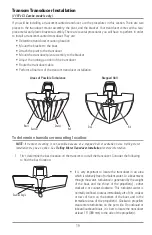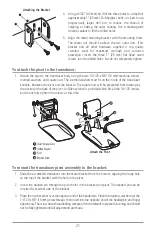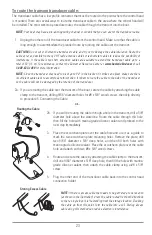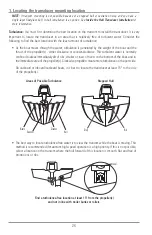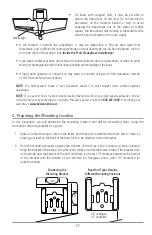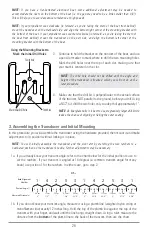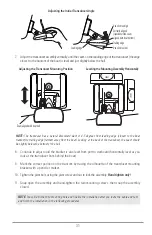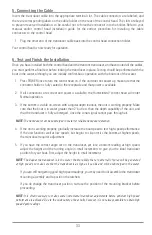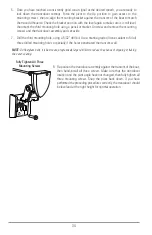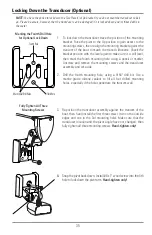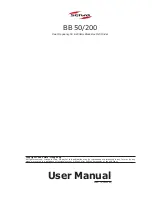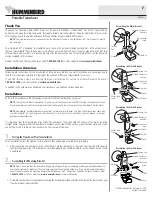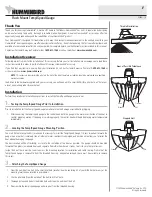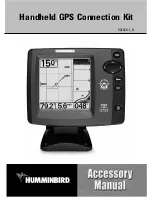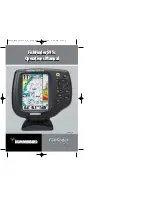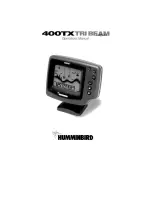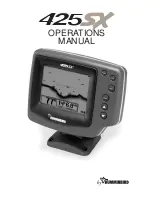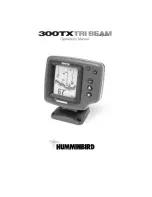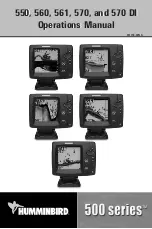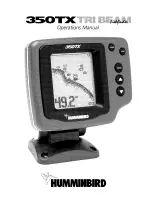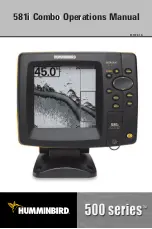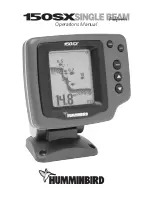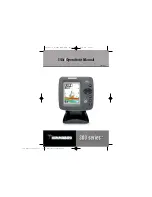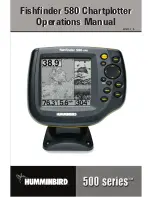
4. Using a 5/32" (4.0 mm) bit, drill the three holes to a depth of
approximately 1" (25 mm). On fiberglass hulls, it is best to use
progressively larger drill bits to reduce the chance of
chipping or flaking the outer coating. Use a marine-grade
silicone sealant to fill the drilled holes.
5. Align the metal mounting bracket with the mounting holes.
The center slot should be above the two outer slots. (This
bracket and all other hardware supplied is top quality
stainless steel for maximum strength and corrosion
protection.) Insert the three 1" (25 mm) flat head wood
screws into the drilled holes, but do not completely tighten.
To attach the pivot to the transducer:
1.
Attach the pivot to the transducer body, using the two 1/4"-20 x 5/8" (16 mm) machine screws,
toothed washers, and square nuts. The toothed washers must fit on the inside of the transducer
knuckle, between the pivot and the knuckle. The square nuts will be prevented from rotating by
the pocket in the back of the pivot. An Allen wrench is provided which fits all the 1/4"-20 screws,
but do not fully tighten the screws at this time.
To mount the transducer pivot assembly to the bracket:
1.
Slide the assembled transducer into the metal bracket from the bottom, aligning the large hole
at the top of the bracket with the hole in the pivot.
2.
Insert the headed pin through the pivot holes in the bracket and pivot. The headed pin can be
inserted from either side of the bracket.
3.
Place the nylon washer over the opposite end of the headed pin. Place the stainless washer over the
1/4"-20 x 5/8" (16 mm) screw threads, then insert into the opposite end of the headed pin and finger
tighten only. The screw has a thread locking compound on the threads to prevent loosening, and should
not be fully tightened until all adjustments are made.
Attach the Pivot
2
3
4
1
Insert the square nuts
1
Toothed Washer
2
Pivot
3
Machine Screw
4
Attaching the Bracket
21













